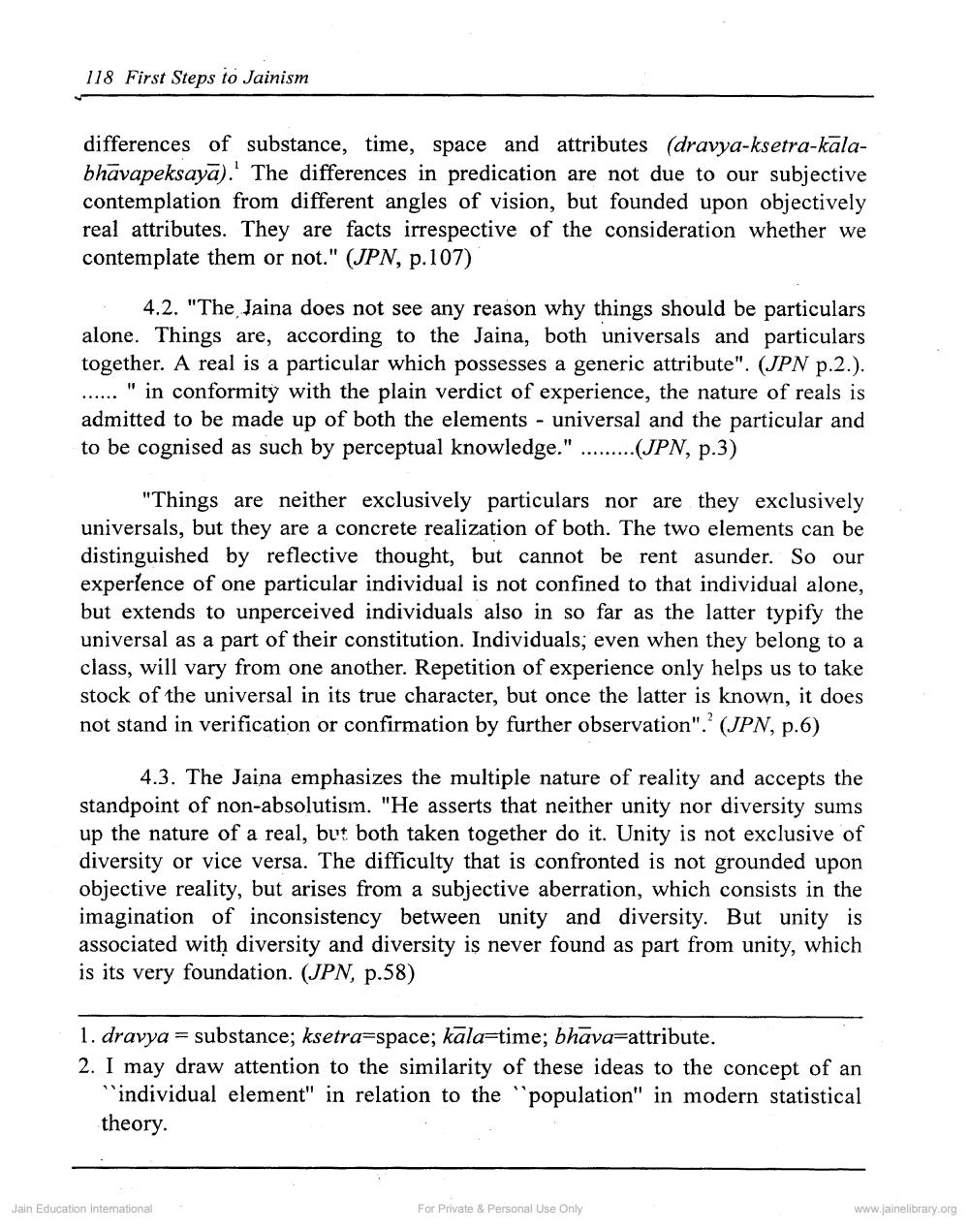________________
118 First Steps to Jainism
differences of substance, time, space and attributes (dravya-ksetra-kalabhāvapeksayā).' The differences in predication are not due to our subjective contemplation from different angles of vision, but founded upon objectively real attributes. They are facts irrespective of the consideration whether we contemplate them or not." (JPN, p.107)
4.2. "The Jaina does not see any reason why things should be particulars alone. Things are, according to the Jaina, both universals and particulars together. A real is a particular which possesses a generic attribute". (JPN p.2.). ...... " in conformity with the plain verdict of experience, the nature of reals is admitted to be made up of both the elements - universal and the particular and to be cognised as such by perceptual knowledge." .......(JPN, p.3)
"Things are neither exclusively particulars nor are they exclusively universals, but they are a concrete realization of both. The two elements can be distinguished by reflective thought, but cannot be rent asunder. So our experience of one particular individual is not confined to that individual alone, but extends to unperceived individuals also in so far as the latter typify the universal as a part of their constitution. Individuals, even when they belong to a class, will vary from one another. Repetition of experience only helps us to take stock of the universal in its true character, but once the latter is known, it does not stand in verification or confirmation by further observation".? (JPN, p.6)
4.3. The Jaina emphasizes the multiple nature of reality and accepts the standpoint of non-absolutism. "He asserts that neither unity nor diversity sums up the nature of a real, but both taken together do it. Unity is not exclusive of diversity or vice versa. The difficulty that is confronted is not grounded upon objective reality, but arises from a subjective aberration, which consists in the imagination of inconsistency between unity and diversity. But unity is associated with diversity and diversity is never found as part from unity, which is its very foundation. (JPN, p.58)
1. dravya = substance; ksetra=space; kala=time; bhava-attribute. 2. I may draw attention to the similarity of these ideas to the concept of an
individual element" in relation to the population" in modern statistical theory.
Jain Education International
For Private & Personal Use Only
www.jainelibrary.org




